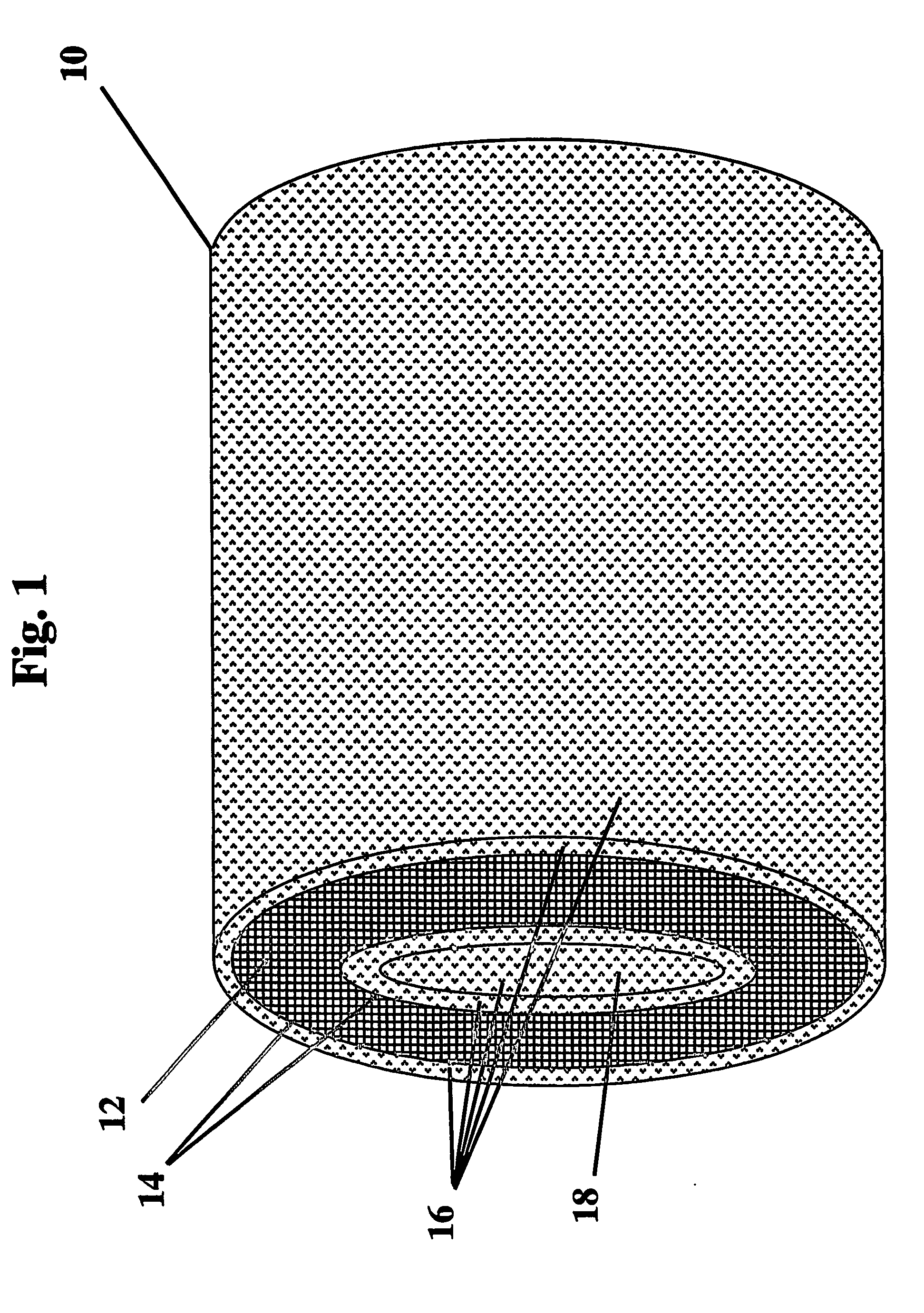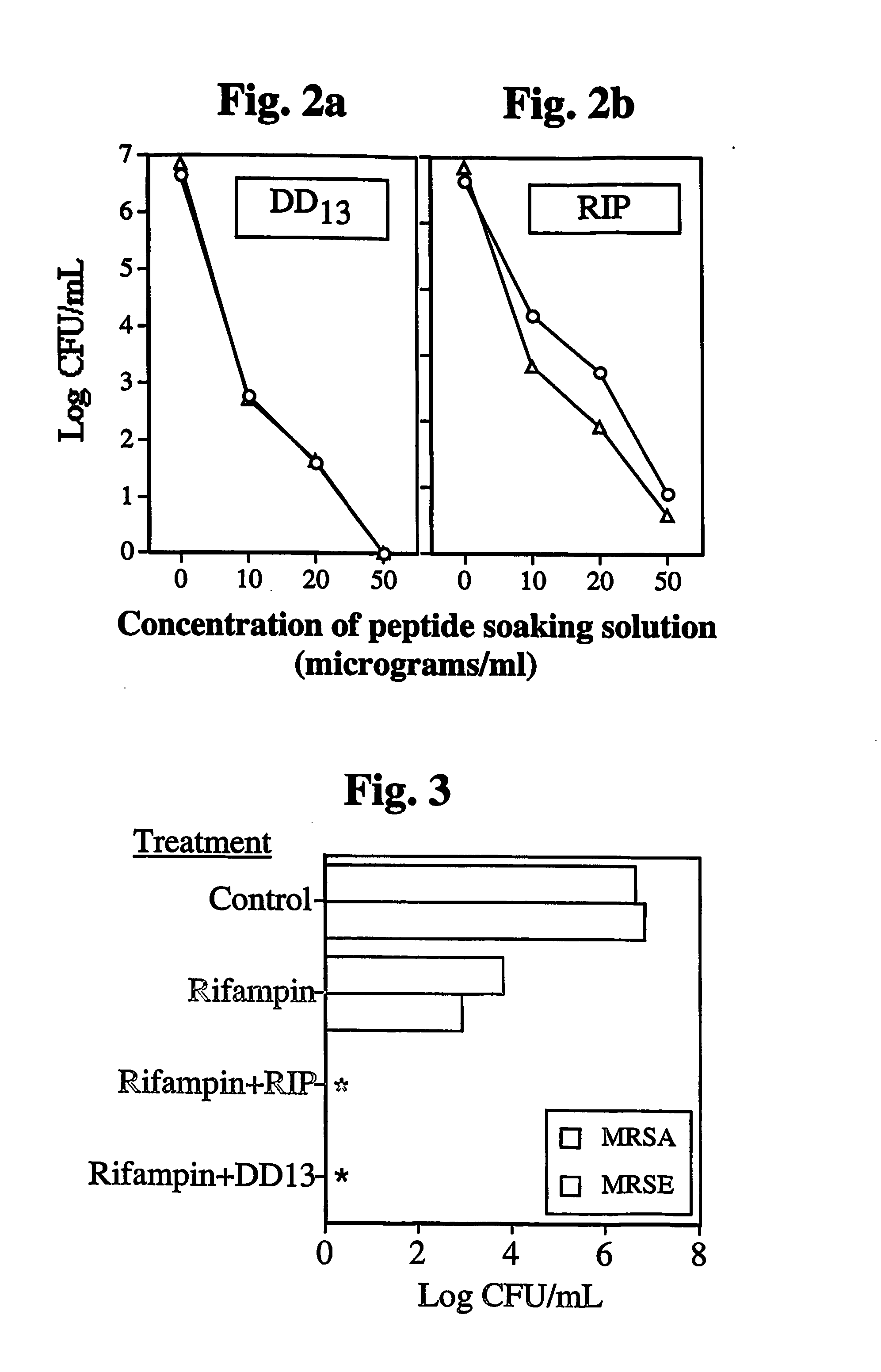Anti-microbial medical implants and uses thereof
a technology of medical implants and anti-microbial technology, applied in the field of medical implants/implants, can solve the problems of vascular prostheses being susceptible to later infection (months to years), affecting the safety and safety of patients, and affecting the safety of patients,
- Summary
- Abstract
- Description
- Claims
- Application Information
AI Technical Summary
Benefits of technology
Problems solved by technology
Method used
Image
Examples
example 1
Optimal In-Vivo Prevention of Infection of Medical Implants by Antibiotic-Resistant Bacterial Pathogens Using Dermaseptin Derivative and RIP Peptides
[0126] Background: Infection by dangerous microbial pathogens are currently responsible for numerous highly debilitating and / or lethal complications, which are difficult or impossible to treat, following administration of medical implants / devices. In particular, infection of synthetic carbon polymer grafts, such as vascular grafts composed of Dacron, by staphylococci, such as methicillin-resistant S. aureus or S. epidermidis, remains a devastating potential complication following implantation of such grafts. A potentially potent strategy which has been proposed for preventing such infections involves treating such grafts with antimicrobial peptides. While a variety of such approaches have been attempted, none have so far succeeded in enabling fabrication of medical implants / devices such as Dacron vascular grafts presenting optimally lo...
PUM
| Property | Measurement | Unit |
|---|---|---|
| concentration | aaaaa | aaaaa |
| concentration | aaaaa | aaaaa |
| OD | aaaaa | aaaaa |
Abstract
Description
Claims
Application Information
 Login to View More
Login to View More - R&D
- Intellectual Property
- Life Sciences
- Materials
- Tech Scout
- Unparalleled Data Quality
- Higher Quality Content
- 60% Fewer Hallucinations
Browse by: Latest US Patents, China's latest patents, Technical Efficacy Thesaurus, Application Domain, Technology Topic, Popular Technical Reports.
© 2025 PatSnap. All rights reserved.Legal|Privacy policy|Modern Slavery Act Transparency Statement|Sitemap|About US| Contact US: help@patsnap.com



